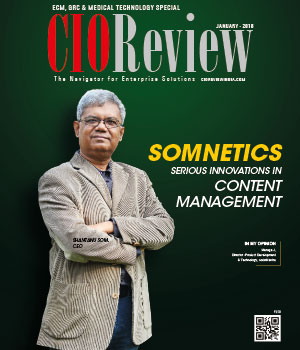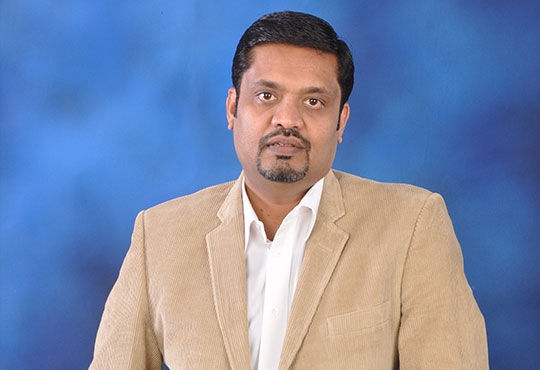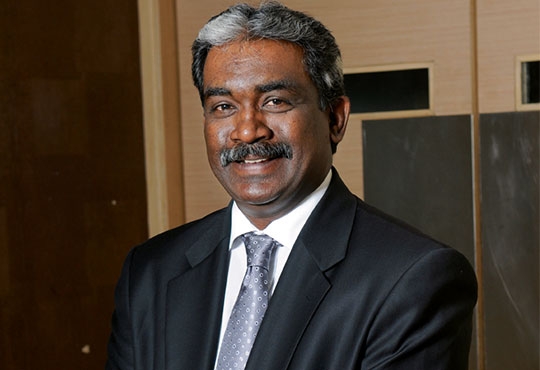
CIOs React to Digital Transformation
Swapna Bapat, Director for Systems Engineering, Brocade India | Thursday, 13 October 2016, 04:30 IST
 Innovation has to happen at multiple layers, one is innovation in technology and the other is innovation in process. In innovation in technology the key role that CIOs are looking for is how a CIO look good in an organization does and what is his contribution to the organizational goals? The main thing that any enterprise expects from the IT is agility which is an ability to react to a situation quickly. That is when there is a demand and it should be met very quickly. So if that is the goal for CIOs, he has to work in two areas, that is, what is technology and adoption of technologies like- network function virtualization, which allows them to provide virtual functions within a matter of minutes in the form of services. If the demand comes for connectivity to a new site, typical CIOs will take a couple of months now. If the ISP link is already ready and it’s a matter of adding a new router in the existing network, with a new peer connectivity that can be done in a short time with a virtual router. This is an example of how adoption of technology helps CIOs to become agile very quickly.
Innovation has to happen at multiple layers, one is innovation in technology and the other is innovation in process. In innovation in technology the key role that CIOs are looking for is how a CIO look good in an organization does and what is his contribution to the organizational goals? The main thing that any enterprise expects from the IT is agility which is an ability to react to a situation quickly. That is when there is a demand and it should be met very quickly. So if that is the goal for CIOs, he has to work in two areas, that is, what is technology and adoption of technologies like- network function virtualization, which allows them to provide virtual functions within a matter of minutes in the form of services. If the demand comes for connectivity to a new site, typical CIOs will take a couple of months now. If the ISP link is already ready and it’s a matter of adding a new router in the existing network, with a new peer connectivity that can be done in a short time with a virtual router. This is an example of how adoption of technology helps CIOs to become agile very quickly.
The second is innovation in the process, which is to bring up something such as- approvals required; multiple teams have to talk to each other as lot of human interaction; lot of paper work is involved. These things cannot be let go off because there are certain security norm that has to be followed, so can we automate it to a large extent. And what if we are trying to automate typically when a change request is made and multiple teams are involved in enabling which is called workflow. Meaning a change request has come in and it needs to go through workflow of various teams. The workflow is really being adopted by CIOs at multiple layers in IT. What Brocade is proposing here is the adoption of workflow at infrastructure level as well. So workflow can start up with simply the network and then it can be built across domains in the organization. The domain could be network, triggering systems, inventory management systems and others systems in IT team.
Brocade is providing Brocade Workflow Composer, the ability to automate cross domain communication across multiple domains in the enterprise in the IT team in the enterprise. Before coming out with this we conducted a study on CIOs and they said the network being the bottleneck to agility. Brocade is trying to bring up the network in an automated fashion and then tie the network to the other components using this Brocade Workflow Composer. The key difference for Brocade is the fact that it has standard based 1900 integration points. So it can integrate with Wmware, openstack and various other standard based tools. So Brocade provides solutions for both innovations in technology as well as process.
According to Gartner in India, by 2020, 75 percent of the enterprises would have moved on the road of digital transformation, but surprisingly only 30 percent would have been effective. They build human expertise in each of these technologies and the humans have to talk to each other. So because of all these the digital transformation would not be effective. But today CIOS are making decisions and Brocade is a choice for them as they know they can integrate with any of the vendor choosing solution for Brocade. Brocade solutions are also open source based, so their automation solutions allow non-Brocade contributors into their solutions. So automation is going to be a key in digital transformation.
Brocade Workflow Composer is a platform which consists a set of python libraries and these libraries are able to automate first network functions. Fabric is a collection of switches which talk to each other using BJP EVPN and one is able to bring up those fabrics or connectivity of the switches through Brocade Workflow Composer. It allows workflow to happen.
Data centres are growing quickly in India and clearly we will have a two billion market by this year. When it comes to network infrastructure, they’ve seen a lot of ease with Brocade doing automation at the infrastructure level. For the next level of automation, we came up with VCS and L2 fabric. The third layer where we have taken automation to one layer about the network. For data centres in India the automation will be a key for its success. The biggest challenge is orchestration amongst technologies but there is lot of adoption things like open stack. The desire to have automation technology is very high and we understand their extremely competitive environment. So the price per VM is going to be their key to success. And to contribute to the price per VM is their data centre infrastructure investments.
CIO Viewpoint
Enterprise Content Management in Digital Age
By Ajay Kumar Jha, Head, Device Technology at MTS - Sistema Shyam Teleservices Ltd
Codes to Lay Down an Efficient ECM Strategy
By Muruga J, Director, Product Development & Technology, codeMantra
Omnichannel is Not Just a Buzzword- Customers...
By Sunil Nair, VP-Technology, Max Hypermarket
CXO Insights
Role of Project Manager and Evolution of...
By Suresh .V. Menon, IASSC Certified Black Belt
Enterprise Storage: Turning Data into Intelligence







